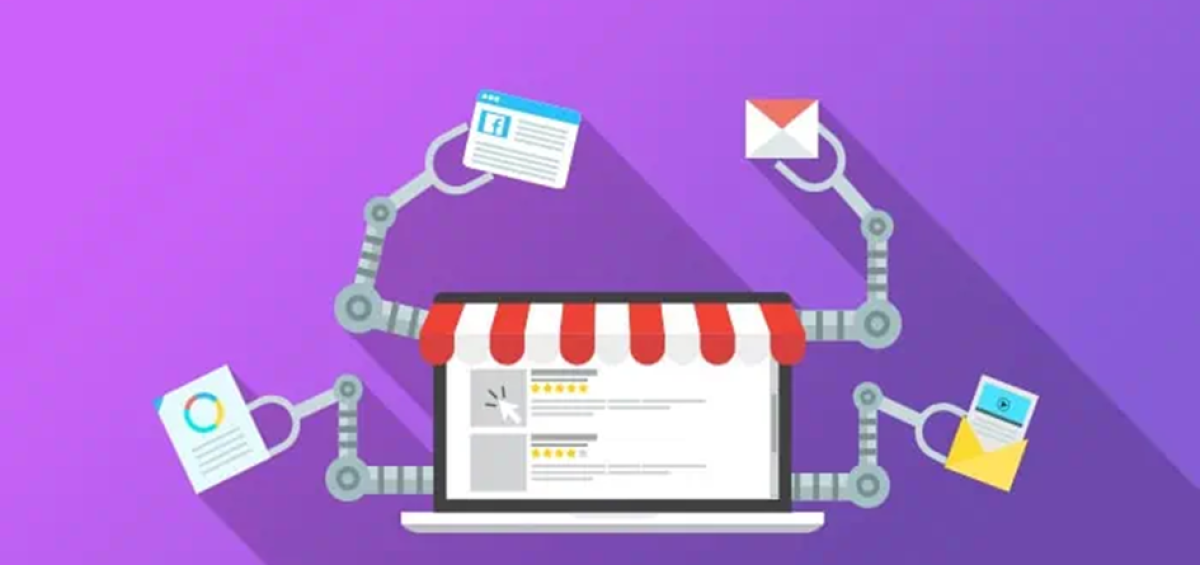Remember the first time you made a sale in your online store? That tiny rush of adrenaline. The notification ping. The feeling that maybe, just maybe, this was the beginning of something big. Now fast forward a bit. You’re juggling emails, ads, inventory alerts, abandoned carts, analytics, customer support messages, and still trying to scale. That initial excitement starts to feel a lot like burnout. That’s where e-commerce marketing automation changes the game. Imagine waking up to a report showing increased revenue, more customers nurtured, and no human errors in your email flow. Sounds like magic? It’s not. It’s a smart strategy paired with the right tools.
Automation isn’t about replacing human touch. It’s about eliminating the repetitive tasks that keep you stuck in the weeds so you can focus on growth. Whether you’re running a side hustle or managing an enterprise-level brand, smart e-commerce marketing automation can unlock real, scalable passive income. Let’s dive into how to set up automation that truly works, the platforms and tools leading the charge, and how you can leverage them today to create a smarter, smoother path to e-commerce success.
Why E-commerce Marketing Automation Is the New Standard
In today’s fast-moving digital landscape, e-commerce businesses are expected to operate 24/7, respond instantly to customers, and deliver highly personalized experiences across multiple channels. Doing all of this manually is not only exhausting but also inefficient and prone to error. That’s where e-commerce automation becomes essential. Automation allows businesses to streamline repetitive tasks such as sending order confirmations, following up on abandoned carts, segmenting customer lists, and managing promotional campaigns.
Instead of hiring large teams to handle these operations, automation tools take over the heavy lifting with precision and consistency. The result is faster response times, better customer engagement, and increased sales with less effort. Additionally, automation gives store owners valuable insights through analytics and reporting, allowing for data-driven decision-making that continuously optimizes performance. Leading ecommerce automation platforms like Omnisend make it easy to build these systems with visual workflows and plug-and-play integrations. As customer expectations rise and competition grows fiercer, e-commerce marketing automation is no longer just an advantage, it’s a necessity. Whether you’re running a small Shopify store or managing a large DTC brand, automating your marketing and operations is the smartest way to scale efficiently and build long-term passive income streams.
The Tools That Power Passive Income
To build a truly e-commerce marketing automation store for sale or scale your current store, you need the right tech stack. This is where the magic happens.
- Omnisend: Perfect for beginners and pros alike. Automates SMS, email, and push notifications. Its pre-built workflows are a lifesaver.
- Shopify Flow: Great for Shopify users who want to trigger automations based on customer actions or sales trends.
- Zapier: Connects your favorite apps and automates the flow of data between them. For example, sync new Shopify customers into your email list or CRM.
- Klaviyo: Known for high-level email and SMS automation with in-depth analytics.
- ReCharge: If you’re into subscription models, this tool automates billing, reminders, and upsells.
- Drip: An excellent ecommerce automation tools platform for small to midsize brands. Allows deep segmentation and dynamic content that converts.
When you combine these tools strategically, you’re not just automating. You’re building a machine that generates e-commerce automation passive income.
FAQs
What is ecommerce marketing automation?
Ecommerce marketing automation refers to using software and tools to automatically perform marketing tasks such as sending emails, managing ads, segmenting customers, and tracking engagement. It allows store owners to streamline operations, nurture leads, recover abandoned carts, and deliver personalized messages without doing it all manually. With automation in place, you can free up time and scale your efforts effectively.
What is the role of automation in e commerce?
Automation plays a critical role in simplifying operations, improving customer experience, and boosting revenue. It handles repetitive tasks like sending shipping updates, recovering abandoned carts, personalizing product recommendations, and managing loyalty rewards. By automating these functions, e-commerce businesses can respond faster, reduce errors, and focus on strategy and growth.
How much does Drip CRM cost?
The cost of Drip CRM is determined by how many contacts you have on your list. It typically costs roughly $39 per month to sign up for up to 2,500 people. The cost increases in proportion to the size of your list. It includes features like advanced email automation, dynamic content, and segmentation. Drip also offers a free trial so users can test its full capabilities before committing.
What is marketing automation and examples?
Marketing automation uses software to automatically perform marketing tasks like sending emails, tracking website behavior, and managing campaigns. Examples include sending a welcome email when someone subscribes, sending a reminder for an abandoned cart, or launching a birthday discount campaign. Tools like Omnisend, Drip, and Klaviyo make it easy to build these automations visually.
What are the types of ecommerce marketing?
Ecommerce marketing includes various types such as email marketing, social media advertising, influencer marketing, content marketing, SEO, and paid search. It also includes retargeting, affiliate marketing, and SMS marketing. With automation, many of these types can work in harmony to drive consistent, measurable results without manual effort.
The Rise of E-commerce Automation Companies
As the demand for hands-off, scalable online businesses grows, a new wave of e-commerce marketing automation companies has emerged to meet it. These companies offer end-to-end solutions for entrepreneurs who want to profit from e-commerce without getting bogged down in the day-to-day grind. From building the store and sourcing products to setting up marketing funnels and customer support systems, they handle it all using advanced automation tools and platforms. Many even offer fully built, revenue-generating automated e-commerce stores for sale, promising a fast track to passive income with minimal involvement. This model appeals especially to busy professionals, investors, and aspiring entrepreneurs who lack the time or technical skills to build a store from scratch. Companies in this space often integrate powerful software like Omnisend, Klaviyo, and Drip to automate email, SMS, and customer segmentation. They also set up dropshipping systems or inventory management tools that reduce the need for physical oversight. While this hands-free approach is enticing, it’s important to choose reputable providers, as not all automation companies deliver on their promises. Due diligence, transparent pricing, and proven case studies are key when evaluating these services. Still, the trend is clear: more people are leveraging these turnkey solutions to enter the e-commerce world quickly and efficiently. As automation technology becomes more sophisticated, these companies will continue to rise, making it easier than ever to own and scale a profitable online business without getting stuck in the weeds.
E-commerce Marketing Automation: How to Set It and Scale It: A Simple Framework
1. Start with Customer Journeys
Map out what happens after someone lands on your site. What messages do they get? What triggers a response? Your automation flows should match the user journey from first click to post-purchase.
2. Automate Your Emails
Set up sequences for:
- New subscriber welcome
- Abandoned cart reminders
- Post-purchase thank yous
- Product review requests
- Re-engagement after inactivity
Tools like Omnisend or Klaviyo make this a breeze.
3. E-commerce mMarketing Automation: Use Behavior Triggers
Modern tools allow you to send messages based on what your customers do. If someone looks at a product but doesn’t buy, you can follow up automatically. If someone spends over a certain amount, trigger a VIP discount.
4. Add Upsells and Cross-sells
Use automation to recommend similar or complementary products. Upsell flows increase your average order value without needing more traffic.
5. Monitor, Adjust, Repeat
Set regular reminders to review automation performance. Check open rates, click-throughs, conversions, and A/B test different messages. Small tweaks can lead to big results.
In the end, running an e-commerce store doesn’t have to be chaotic. By using the right ecommerce automation platform, tools like Omnisend, and proven workflows, you can set up a system that grows even when you’re not looking. Whether you’re starting fresh or buying into an e-commerce marketing automation store for sale, the right setup can turn effort into efficiency and hustle into passive income. Stop micromanaging every sale. Start building a business that runs itself. It’s not just possible. It’s what the smartest sellers are already doing.







